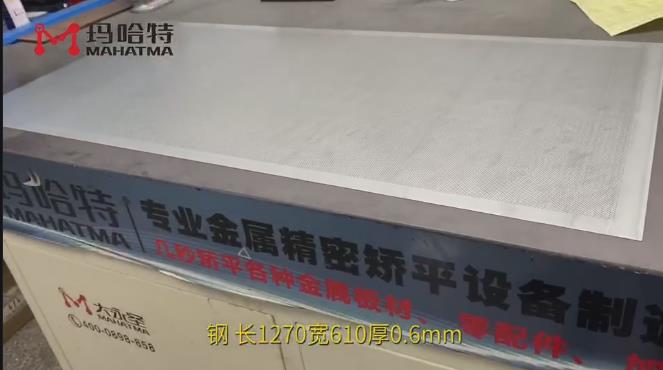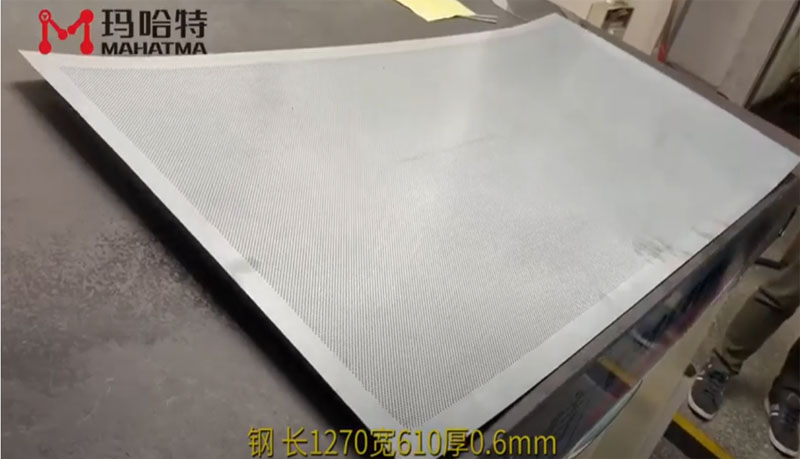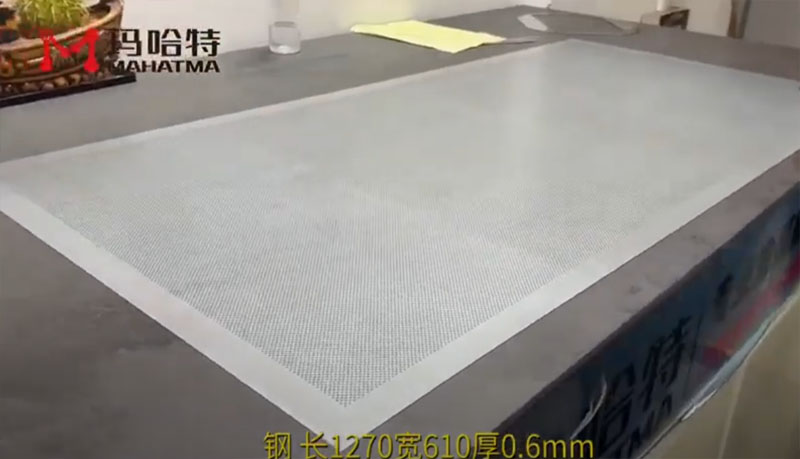Ceiling mesh board is a common building decoration material that can be used in suspended ceilings, partitions, and other places, as well as in walls, columns, and other places. During the manufacturing process of ceiling mesh panels, processes such as punching, bending, leveling, and painting are required. Leveling is a crucial step in achieving the required surface smoothness of the ceiling mesh, thereby improving product quality and enhancing product competitiveness.

After punching, irregular protrusions and depressions often appear on the ceiling mesh due to the nature of the material and the process limitations of the punching machine, which requires leveling treatment. The purpose of leveling is to achieve the required surface flatness of the ceiling mesh board, which can not only improve product quality, but also improve production efficiency, reduce the time and cost of secondary processing.

There are many methods of leveling, including mechanical pressing and hydraulic leveling. Mechanical flattening is the process of placing the ceiling mesh on a specialized machine and flattening its surface through the pressure of the machine. Hydraulic leveling is the use of a hydraulic system to flatten the ceiling mesh plate through hydraulic cylinders. Different methods have different advantages and disadvantages, and the choice of method depends on the specific situation.
After leveling, the ceiling mesh can be bent. Bending is the process of bending ceiling panels into the desired shape according to design requirements, commonly known as U-shaped, L-shaped, Z-shaped, etc. The bending methods include manual bending and mechanical bending. Mechanical bending can improve production efficiency and product quality, but the cost is relatively high.

The final step is painting, which involves spraying paint on the surface of the ceiling mesh board, which can make it aesthetically pleasing, corrosion-resistant, fireproof, moisture-proof, and other functions. There are also many painting processes, commonly including electrostatic spraying, spraying, roller coating, etc. Different spray painting processes have different application ranges and effects, and selecting the appropriate spray painting process can improve product quality and production efficiency.
In short, leveling is a very important step in the manufacturing process of ceiling mesh panels, as it can achieve the required surface smoothness and improve product competitiveness. Before performing leveling, it is necessary to choose an appropriate leveling method, depending on the specific situation. After leveling, the ceiling mesh can be bent, painted, and other processes to ultimately produce high-quality building decoration materials.
| Materials | Length | Width | Thickness | Accuracy |
| Galvanized stainless steel | 1250mm | 620mm | 0.6mm | 0.1mm |


